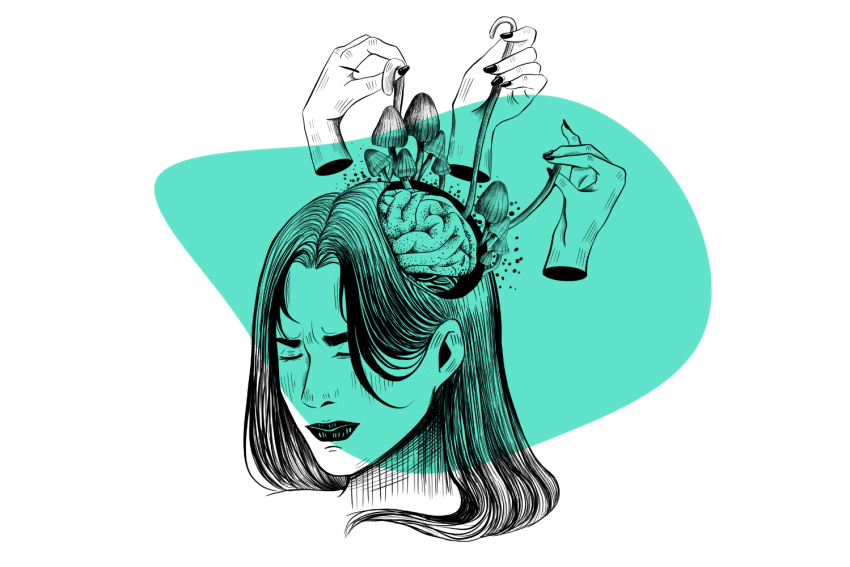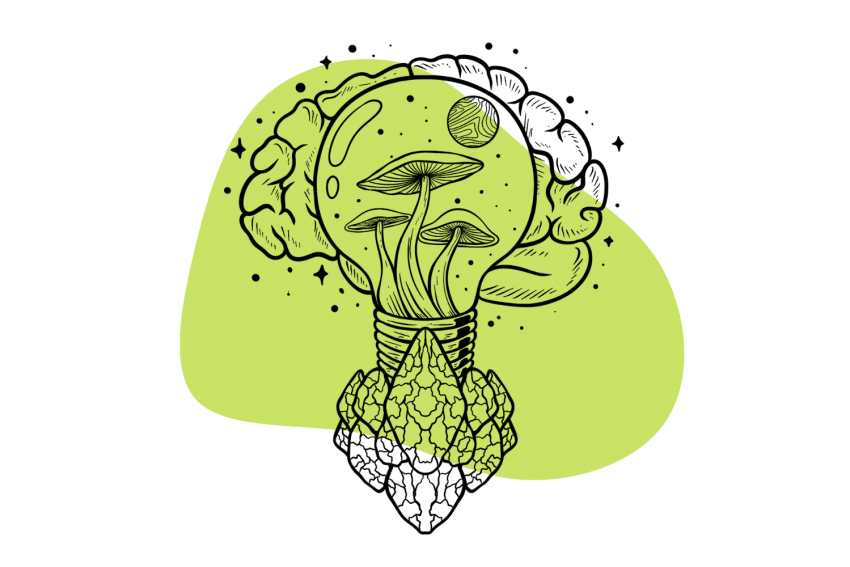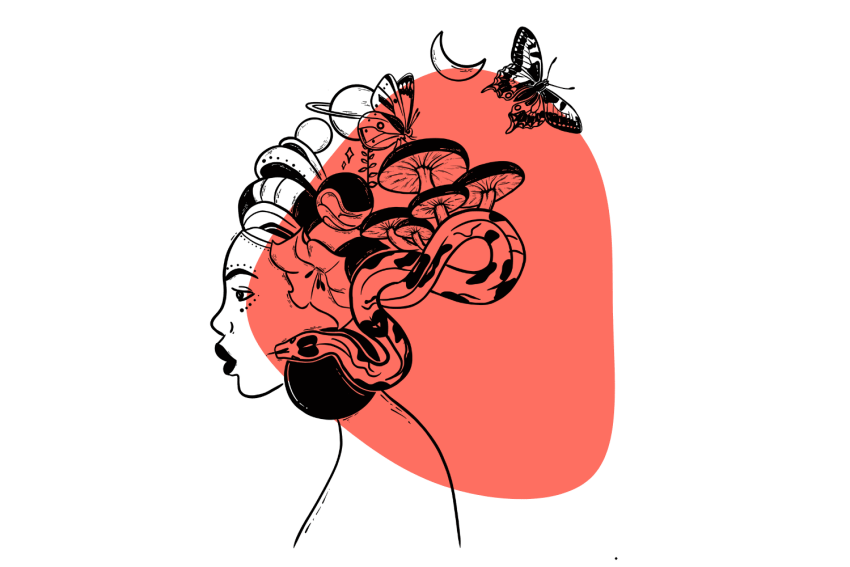What is REM Sleep & Why Is It So Important?
REM sleep is also known as the “dream phase” of the sleep cycle. However, the brain experiences far more than just dreaming during this stage of sleep…
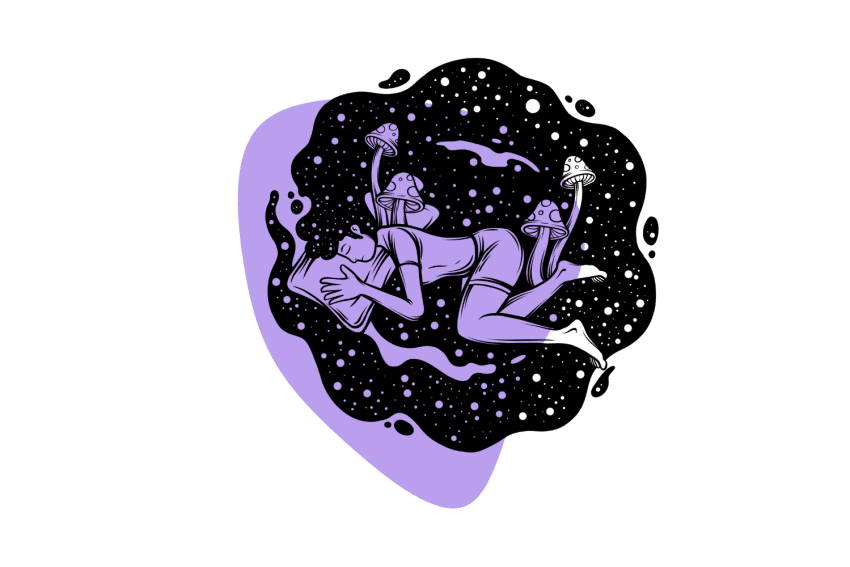
Rapid eye movement (REM) sleep, known as active sleep, paradoxical sleep, dream sleep, and desynchronized sleep, is the final stage in the sleep cycle. This stage is known to be the phase in which you dream, but it’s responsible for far more than unconscious visions.
REM sleep was discovered during the 1950s while scientists studied sleeping patterns. They noticed periods of sleep where children’s eyes would move rapidly from side to side and named this phase ‘rapid eye movement’, or REM for short.
This article will examine REM sleep, what happens during it, and why it’s so important.
What Happens During the REM Phase of Sleep?
Besides the rapid movement of your eyes behind their lids, many other brain functions occur during REM sleep.
Unlike the first three stages of sleep, where your brain slows down significantly, your brain becomes more active during REM sleep. Your brain and body function similarly to when you’re awake while in REM sleep, except your eyes remain closed, and you have reduced “muscle tone.”
This temporary muscle tone reduction is believed to prevent you from acting out your dreams. Although dreaming does occur during some of the other stages of sleep, they’re much more vivid during REM sleep.
The first period of REM sleep typically lasts around 10 minutes and gradually gets longer throughout each sleep cycle. The final period of REM sleep can last for over an hour; this is why you may recall having vivid dreams just before waking up.
During REM, your brain waves become more variable, and the areas of the brain that help with learning and protein production are more stimulated.
Babies and young children spend around 50% of their sleeping hours in the REM phase of sleep — this is most likely because REM is responsible for early brain development [1].
When Does REM Sleep Occur?
REM sleep occurs around 90 minutes after you fall asleep. It’s the fourth and final stage of the sleep cycle, with three non-REM (NREM) phases preceding it.
The sleep cycle (stages one to three and REM) takes 90 to 120 minutes to complete fully. Once REM is complete, the brain cycles back through the stages one by one, with the REM phase increasing in length each time.
So, what are the four stages of sleep?
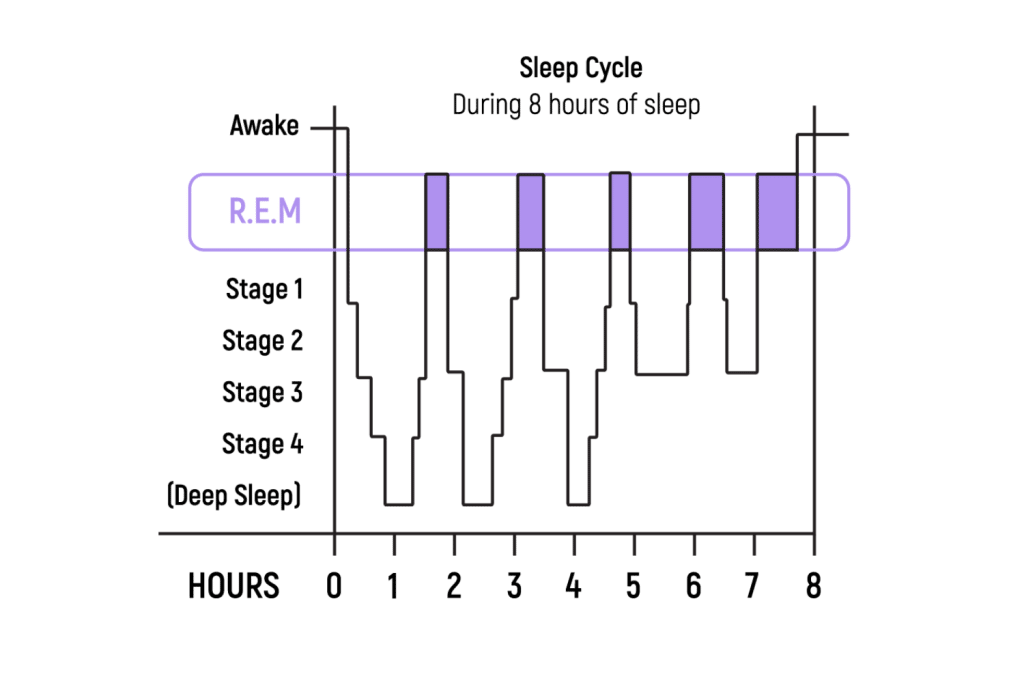
What Are the Four Stages of Sleep?
There are four phases in the sleep cycle, and each one is essential in getting a good night’s rest. These stages were determined by analyzing human brain activity during sleep — each stage shows distinct patterns.
Each complete sleep cycle (stages one to four) varies in length but generally lasts between 90 and 120 minutes. During a typical night of sleep, the average person goes through four to six sleep cycles before waking.
Let’s take a look at the four stages that make up the sleep cycle and what happens during each one:

Stage 1: Light Sleep (NREM)
The first cycle stage occurs just as you drift off to sleep — this is essentially the stage where you’re “dozing off.” This stage is also known as N1 (non-REM one).
As you become drowsy, your brain produces alpha waves that help you feel relaxed and enter the first stage of sleep.
Once you start to drift off, your brain begins to slow down, and low-amplitude mixed-frequency (LAMF) activity replaces the alpha brain waves.
These brain waves are “twitchy” in a sense, and the sleep is extremely light — your body isn’t fully relaxed, and it’s easy to wake up in this phase. Your eyes produce noticeable movements but don’t rapidly twitch as they do during REM sleep.
Although it’s easy to awake during stage one, you can quickly enter stage two if you’re left undisturbed. Stage one usually lasts around five minutes, and the brain rarely enters this phase again during a night’s rest.
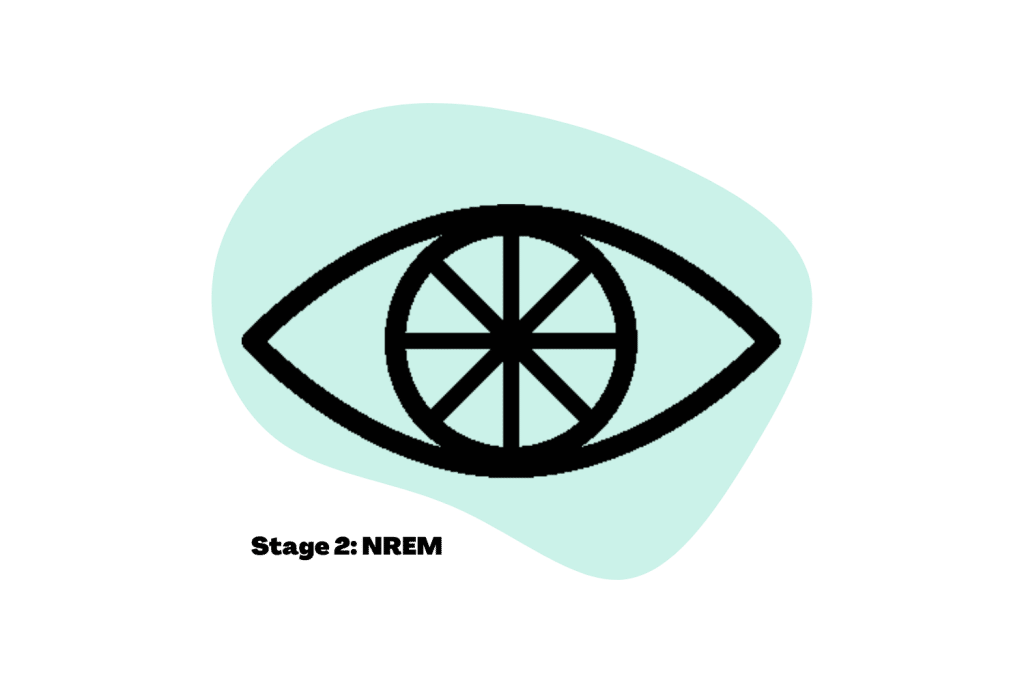
Stage 2: Light Sleep (NREM)
During stage two of non-REM sleep (also known as N2), your heart rate and body temperature decrease. Your muscles become relaxed, your breathing slows, and you enter a more subdued state of sleep.
Your eyes stop moving completely, and brain waves begin to show new patterns. Brain activity as a whole slows down during stage two. However, the brain has bursts of activity that help the body resist awakening to external factors. It’s much harder to awake during this stage of sleep.
N2 lasts anywhere from 10 to 45 minutes. During the first cycle, stage two is shorter than it is throughout the second, third, and fourth sleep cycles in a night of sleep.
Around 50% of sleep is spent in stage two.

Stage 3: Deep Sleep (NREM)
During stage three of NREM, you enter deep sleep. Your body relaxes, your muscle tone decreases, and your pulse and breathing slow down dramatically.
This stage of sleep is sometimes referred to as delta sleep because your brain produces a pattern that’s identified by the delta waves it produces. These slow brain waves signal a reduction in brain activity. However, they’re associated with insightful thinking, memory, and creativity [2].
Research suggests that the deep stage of sleep (N3) is vital for bodily recovery and growth. It may also be responsible for regulating the immune system and other important bodily processes [3].
During the first sleep cycle, the average person spends around 30 to 40 minutes in stage three. However, the time spent in this stage reduces throughout the night during the following sleep cycles.
Due to the decreased brain activity and increased relaxation during this stage, you’re far less likely to awaken from interference due to external stimuli.
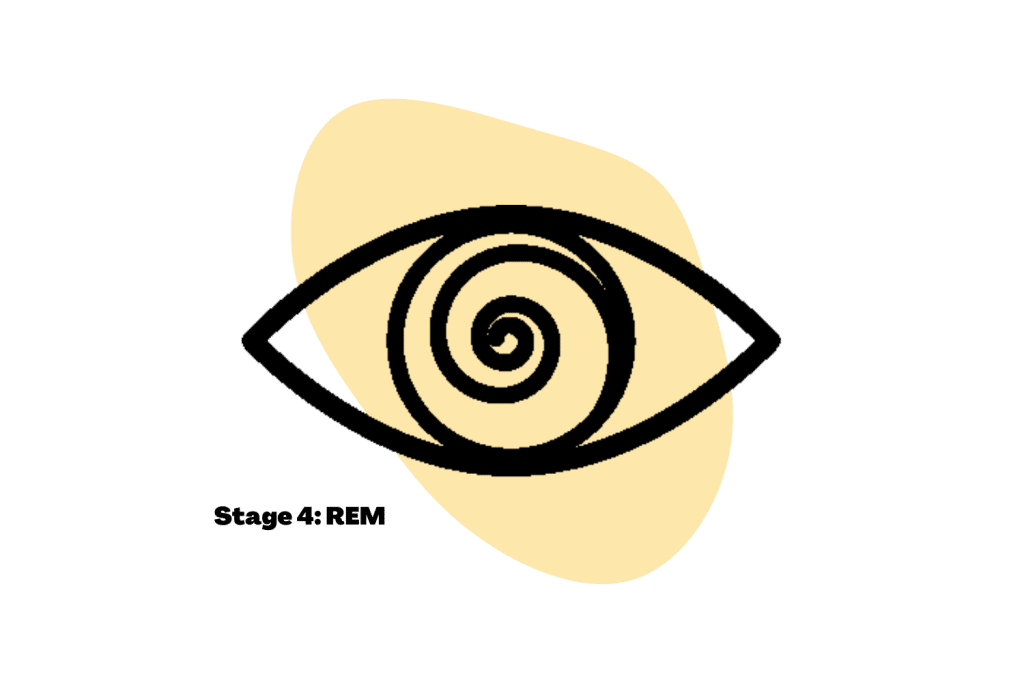
Stage 4: Rapid Eye Movement Sleep (REM)
The fourth and final stage of the sleep cycle is known as REM (rapid eye movement) sleep. During this stage, brain activity increases to a level that’s close to a wakeful state.
Although brain activity noticeably increases, the body experiences temporary paralysis, otherwise known as atonia.
The only body parts that don’t become paralyzed are the eyes and the muscles associated with breathing. During this stage, the eyes can be seen rapidly moving from side to side under the eyelids (this is where the name REM sleep comes from), and breathing is less regulated and much faster.
REM sleep is famously noted as the “dreaming” stage of the sleep cycle because it is believed to be the only stage in which we dream.
We now know that dreaming occurs throughout the other stages of sleep, but they are most vivid during REM. The rapid eye movements could result from the dreaming activity, and the atonia could be the body’s way of preventing us from “acting out” the dreams.
REM sleep is responsible for several cognitive functions, such as learning, creativity, and memory (more on this later) [4].
You first enter REM sleep around 90 minutes after falling asleep. During the first cycle, REM can last as little as 10 minutes, but the stage gets gradually longer throughout the night, with the final cycle seeing up to an hour of REM sleep. It’s relatively easy to wake up during this stage.
In total, the fourth stage of the sleep cycle (REM sleep) makes up for around 25% of an adult’s night of sleep. Children spend more time (up to 50%) in the REM stage, likely due to the development of cognitive functions during the early stages of life [5].
Is REM Sleep Important?
Sleep is extremely important overall. The National Sleep Foundation recommends that adults should aim to get between seven and nine hours of sleep per night to remain healthy and function well during waking hours [6].
REM sleep, in particular, is an integral part of our sleep cycle that plays a role in emotional processing, memory consolidation, and brain development.
Here are five important functions that occur during REM sleep:
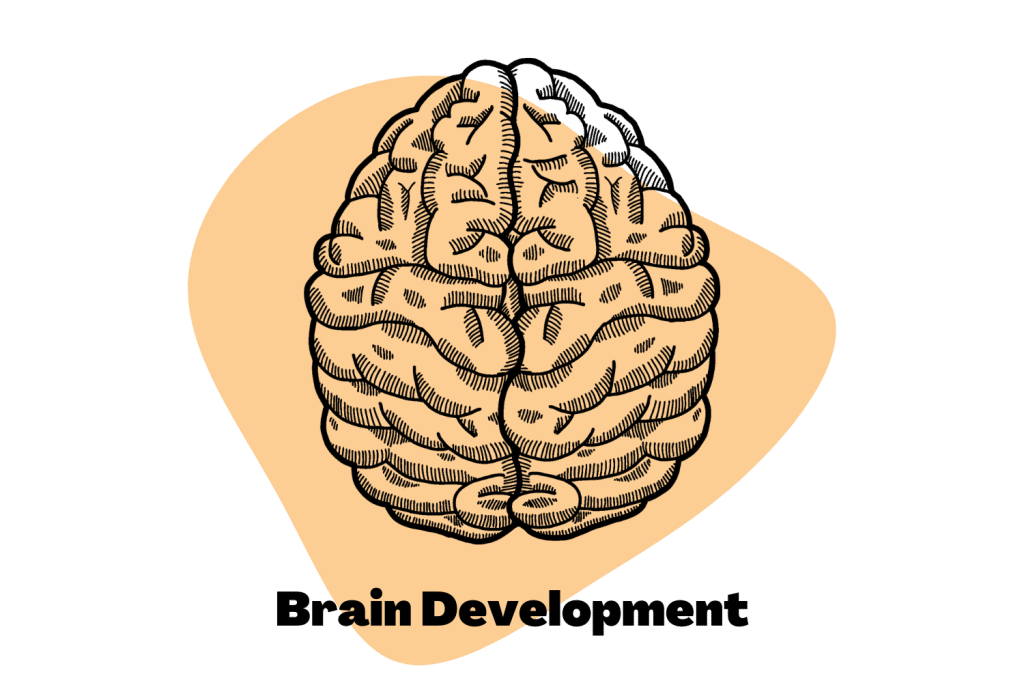
1. Brain Development
The REM sleep seems to be extremely important for brain development. Young children spend up to 50% of their sleep in the REM phase — this could be because it helps brain development in some way.
Researchers have hypothesized the idea for decades, but only recently has evidence proved REM sleep influences brain development.
Recent studies have discovered that REM sleep helps selectively prune newly-formed dendritic spines in developing brains. This stage of sleep also strengthens the synapses in young brains during development [7]. These processes are essential for neuronal circuit development, behavioral improvement, and learning.
Further proof of the importance of REM sleep on brain development can be seen when looking at other mammalian species.
Animals such as cats and dogs that are born with less developed brains (as are humans) spend a large part of their early sleeping life in the REM stage. On the other hand, animals born with more developed brains, such as horses and elephants, spend significantly less time in the REM stage of sleep.

2. Vivid Dreaming
Although REM sleep isn’t the only stage of sleep that we dream in, this is the stage where dreams occur most and are most vivid. Dreams experienced during this stage of sleep are far more lifelike and impactful than dreams that occur during non-REM sleep.
It’s widely believed that dreams play an essential role in several core brain functions. They may help us store important memories while getting rid of unimportant memories, as some studies suggest [8]. They may also help us sort through complicated thoughts and feelings to allow us to process and make sense of them.
Dreams may also play a large part in memory consolidation and emotional processing — two functions that occur during REM sleep.
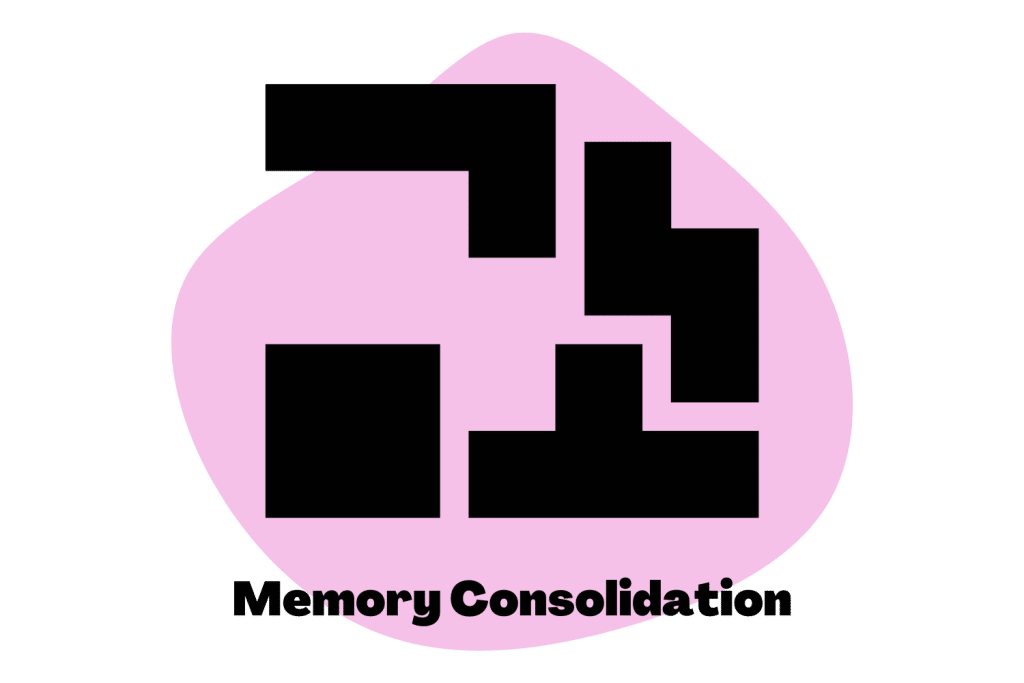
3. Memory Consolidation
During the non-REM deep sleep and REM stage of sleep, the brain processes new information that has been gathered throughout the day [9].
New learnings and motor skills are organized in the brain. Some are committed to memory and stored, older memories are maintained to keep them fresh in the brain, and others deemed useless are “deleted.”
Recent studies have addressed the two memory functions of the brain in its waking and sleeping state. The waking brain is essentially optimized for encoding memories, whereas the sleeping brain — specifically during stage four of N-REM and REM — is optimized for memory consolidation [4].
This essentially means that while you’re awake, your brain is gathering potentially useful information from external stimuli but not sorting the memories into groups. During the latter stages of sleep, your brain takes these memories and sorts them into groups, discarding less-useful information and storing useful information.
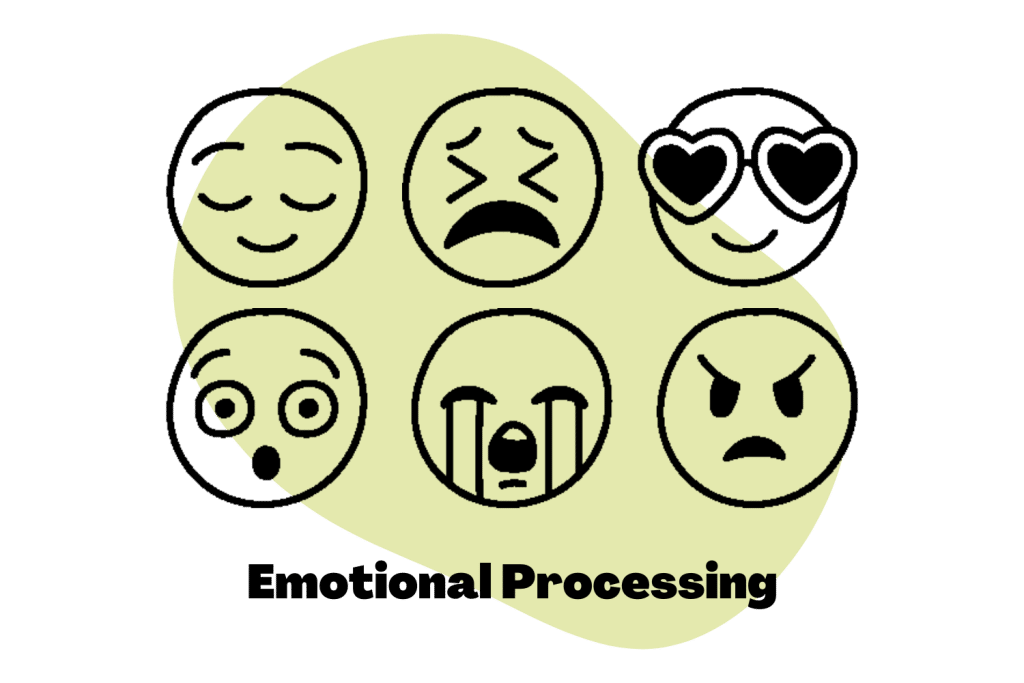
4. Emotional Processing
Similarly to the brain processes information and organizes it into memories during REM sleep, the brain also processes emotions.
The vivid dreaming during the REM sleep stage could be the key to emotional processing in this phase. Some research points toward the importance of dreaming and emotional processing, but it’s unclear whether this is true.
We know that the amygdala (the part of the brain responsible for processing emotion) is activated during REM sleep [10].
The amygdala plays a crucial role in processing emotional signals and formatting emotional memories. Scientists using neuroimaging have found that the amygdala activates during REM sleep. This strongly points to the importance of REM sleep in emotional signaling, and our sleeping hours likely play a valuable part in our emotional processing.
The phrase “sleep on it” after you’ve experienced an upsetting or emotional situation could be more valuable than you think.
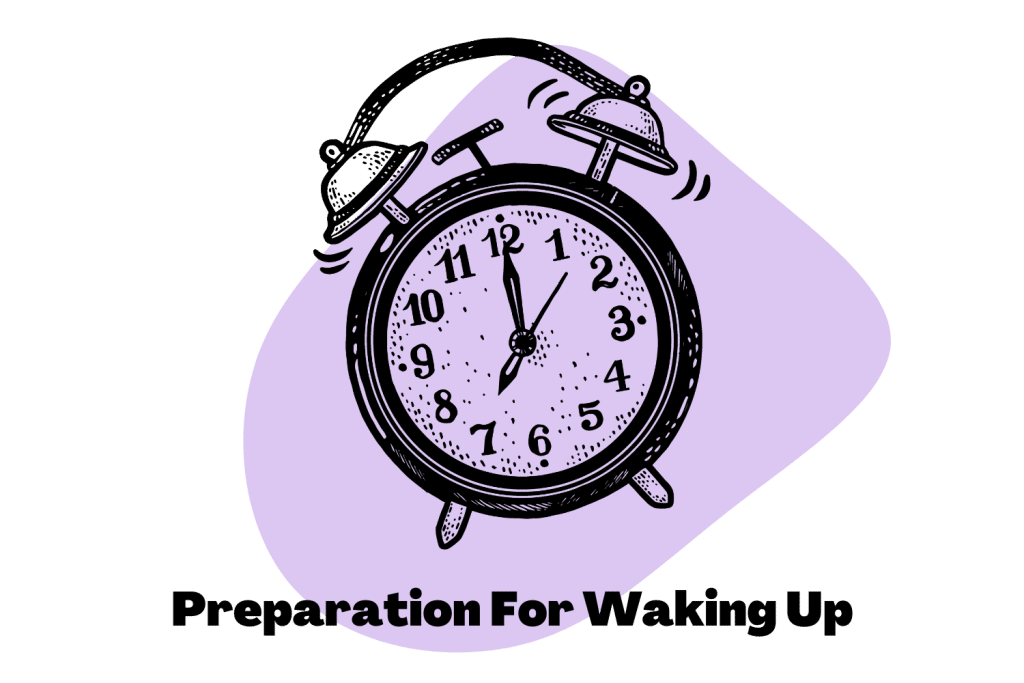
5. Preparation for Waking up
REM sleep may help us prepare for waking up; this could be why this stage increases in length as we move through sleep cycles during the night.
Waking up during the REM stage of sleep isn’t ideal. It’s common to feel disoriented and tired due to the high melatonin levels apparent throughout this stage. However, the brain’s interaction with the central nervous system during REM may prepare us for waking up at the end of a sleep cycle where sleep is at its lightest.
There isn’t much in the way of research to prove this theory. However, when we look at the neurotransmitter acetylcholine, we see it plays a vital role in waking up and keeping you awake. This neurotransmitter is strongest during the REM sleep phase and in your early waking hours.
Do You Need REM Sleep Every Night?
In short, yes, you do need rapid eye movement sleep every night. As mentioned in the last section, REM sleep plays an important role in several developments and functions in the human body.
Humans require the most sleep during infancy and early life. Children spend around 50% of their sleeping life in the REM phase, and newborns spend up to eight hours in REM each day. This sleep phase clearly plays a crucial role in brain development and is vital for young people.
So, is REM sleep just as important for adults, and do we need REM sleep every night?
Some animals require very little REM sleep. Species such as horses, cows, and elephants barely enter REM sleep at all. However, other species, such as cats, dogs, and humans spend several hours in REM sleep every 24-hour cycle.
The amount of time you spend in REM sleep varies daily and changes throughout the course of your life. As a newborn, humans spend over 50% of sleep in the REM phase, moving down to 20% to 25% during adulthood.
This stage of sleep is clearly more important in early life than later life, but although we get less as adults, it’s still critical.
You should aim to get a full night’s rest every night — around eight hours. Within these eight hours, the average adult will spend around 90 to 120 minutes in the REM stage. This seems to be the ideal amount of REM and achievable if you get a full night of rest every night.
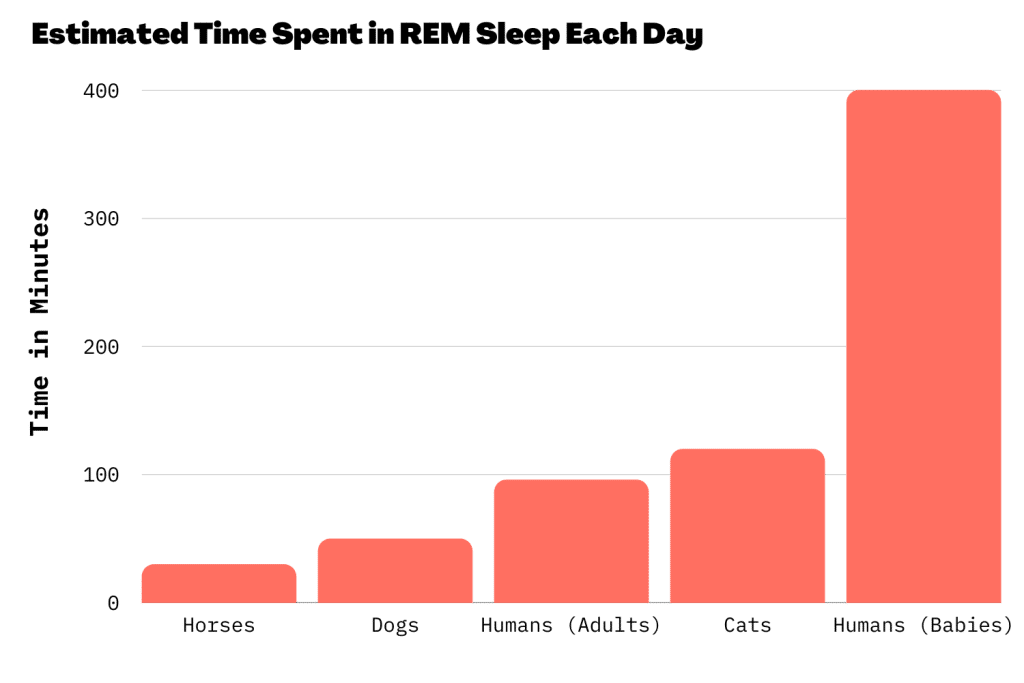
What Happens If You Don’t Get Enough REM Sleep?
Several studies suggest that REM sleep could be responsible for numerous brain and body functions. Not getting enough REM sleep — or any type of sleep, for that matter — may negatively affect you in several ways.
Studies suggest that cutting your sleep down by even a couple of hours per night could impact your health significantly. “Short sleepers” could experience problems with neurobehavioural performance, metabolism, obesity, and psychological health.
Not getting enough REM sleep due to improper nightly rest could give you several short-term problems.
You may experience these symptoms after a night with insufficient rest in the REM stage of sleep:
- Difficulty concentrating throughout the day
- Drowsiness throughout waking hours
- Forgetfulness
- Learning difficulties
- Poor memory recollection
Long term, a lack of sleep poses a serious health risk.

How To Ensure You’re Getting Enough REM Sleep
Ensuring you get enough REM sleep is simple. All you need to do is make sure you get a full night of rest.
The National Sleep Foundation recommends that adults get between seven and nine hours of sleep.
The amount of sleep required daily depends on age. The amount of sleep a newborn needs is much greater than the amount of sleep an elderly person needs.
Here are the recommended hours each age bracket should be getting per night:
- Newborns: 14–17 hours
- Infants: 12–15 hours
- Toddlers: 11–14 hours
- Children between 6 & 13: 9–11 hours
- Adults: 7–9 hours
- Elderly: 7–8 hours
You’ll get enough REM sleep if you get the recommended hours of sleep for your age bracket. However, getting a full night’s rest is no easy feat for some people. Around 70 million people in the United States suffer from insomnia or other related sleep issues.
So, what can you do to get the right amount of sleep?
How to Combat Insomnia & Other Sleep-Related Disorders
There are several strategies that may help you get a few nights’ rest. Although we won’t go into these methods in depth, below is a list of options to explore if you feel you’re struggling to sleep:
- Avoid caffeine later in the day
- Avoid large meals before bed
- Eat a balanced diet
- Get sufficient exercise
- Have a hot shower before bed
- Restrict the use of blue-light-emitting devices before bed
- Set a strict sleep schedule
- Speak with a sleep specialist
- Take melatonin supplements
A Final Word: The Importance of REM Sleep
REM sleep is extremely important during early life and throughout the adult and elderly life. This sleep stage is vital for memory recollection, emotional processing, and several other brain functions. It’s important that you get enough time in the REM phase every night to ensure you stay healthy and functional during waking life.
Numerous studies outline the importance of REM sleep for people of all ages. This isn’t just the “dream phase” of sleep — although dreams are most vivid during this period, there are several other “behind the scenes” functions that are taking place.
The average adult should aim to get between seven and nine hours of sleep per night. This helps ensure the 90 to 120-minute period of REM sleep is met. If you’re struggling to get enough sleep during the night, there are several things you can try. Consult a sleep specialist if you’re suffering from severe insomnia.
References
- Tarullo, A. R., Balsam, P. D., & Fifer, W. P. (2011). Sleep and infant learning. Infant and child development, 20(1), 35-46.
- Verleger, R., Rose, M., Wagner, U., Yordanova, J., & Kolev, V. (2013). Insights into sleep’s role for insight: Studies with the number reduction task. Advances in cognitive psychology, 9(4), 160.
- Besedovsky, L., Lange, T., & Born, J. (2012). Sleep and immune function. Pflügers Archiv-European Journal of Physiology, 463(1), 121-137.
- Rasch, B., & Born, J. (2013). About sleep’s role in memory. Physiological reviews.
- Jiang, F. (2019). Sleep and early brain development. Annals of Nutrition and Metabolism, 75(1), 44-54.
- Hirshkowitz, M., Whiton, K., Albert, S. M., Alessi, C., Bruni, O., DonCarlos, L., … & Hillard, P. J. A. (2015). National Sleep Foundation’s sleep time duration recommendations: methodology and results summary. Sleep health, 1(1), 40-43.
- Wolfe, K., & Ralls, F. M. (2019). Rapid eye movement sleep, and neuronal development. Current opinion in pulmonary medicine, 25(6), 555-560.
- Zhao, H., Li, D., & Li, X. (2018). Relationship between dreaming and memory reconsolidation. Brain Science Advances, 4(2), 118-130.
- Ackermann, S., & Rasch, B. (2014). Differential effects of non-REM and REM sleep on memory consolidation?. Current neurology and neuroscience reports, 14(2), 1-10.
- Corsi‐Cabrera, M., Velasco, F., del Río‐Portilla, Y., Armony, J. L., Trejo‐Martínez, D., Guevara, M. A., & Velasco, A. L. (2016). Human amygdala activation during rapid eye movements of rapid eye movement sleep: an intracranial study. Journal of Sleep Research, 25(5), 576-582.


